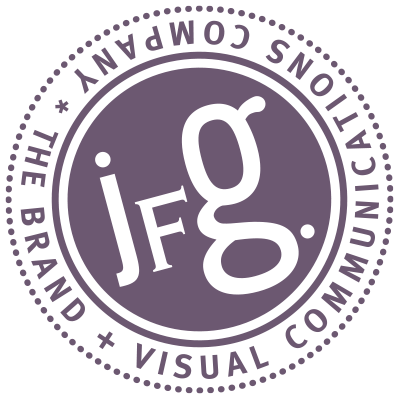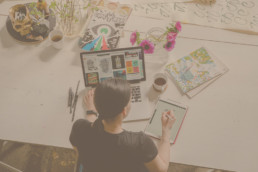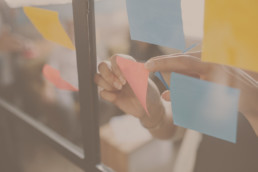Design: A commodity or a critical asset?
Should you go to a freelance crowdsourcing marketplace when looking for a designer?
When you don’t really care, yes, but if you do care, you are taking a risk.
Recently, I was listening to Ilise Benun of Marketing Mentor’s podcast, “What is your value to your dream client.” where she quoted Steven Gates, Head Design Evangelist of InVision. “Design is disrespected and underfunded, it is treated like a commodity rather than a critical asset.”
In the podcast, Ilise encouraged designers to rethink how we see ourselves and how our prospects may see us. I was captivated by the quote and set out to see what others thought. At a recent networking event, I had the perfect opportunity:
I was speaking with a printer that I met at the event. When I told him, “I’m a graphic designer who works with startups and entrepreneurs, providing brand strategy and creatives services,” he expressed that he usually works with crowdsourcing marketplaces for his graphic design needs. Crowdsourcing, according to Merriam-Webster, is the practice of obtaining needed services, ideas, or content by soliciting contributions from a large group of people, especially from an online community rather than from a traditional service provider, i.e., a designer.
I was curious about this printer’s reasons for choosing to crowdsource rather than to partner with an experienced designer. This gentleman stated that his customers want a few options to select from, without spending a lot of money, usually within a tight timeframe—and that with crowdsourcing, he has had great success. It was as if “artwork for a project” was all that was needed in most cases. A simple transaction. He didn’t seem to consider the possible benefits or value of strategic design, but then again, maybe his clients didn’t require the benefits or value either.
Was this printer an ideal client for me? Not necessarily. But his take on design—and its value (or lack thereof)—got me thinking: Are there times when sourcing to a freelance crowdsourcing marketplace is okay? Are there times when it’s never okay? And most of all—how can businesses in need of design find the designer that will best suit their needs?
Is Crowdsourcing Ever Okay—and When?
This may come as a surprise, but I know there will always be a need for those quick, down-and-dirty, cheap projects, where the goal is to have something for that one-time event, like a t-shirt design that will be used for your brother-in-law’s guys fishing day out. In my opinion, crowdsourcing is okay for a project like that, for it is likely, that the very same design will be repurposed for others with a similar request. Since nothing is being branded for mass appeal, bought or sold, or being used to establish a companies graphic standards, there’s no need to build value or loyalty around this “brand”—and that is okay.
However, when it comes to a growing business, it is vital to consider the value, strategy, and overall goals that this project must achieve. In this case, crowdsourcing the design is not a great option, and there are many reasons why.
The Downsides of Crowdsourcing
When taking a chance with crowdsourcing, you may encounter the following:
- Design or artwork that really doesn’t hit the mark of what you may have envisioned or expected
- Artwork that was not correctly created in file formats that will work for all mediums and sizes
- Receiving artwork that was repurposed, or used over and over by others
- The final cost being beyond what was initially expected or quoted
- The time to complete the project is longer than expected
- There is much hand-holding in the execution of the design—you are telling the designer exactly what to do, and there is no collaboration or development for improvement
- Communication mishaps due to email-only exchanges, long response times between rounds, no local access to meet in person, working within different time zones, or simply just not knowing the person you are working with
Price of Crowdsourcing—Deal or No Deal?
Sure, you may get a low price if you crowdsource, but what does your business lose? Several essential questions immediately came to mind about the effectiveness of such a cheap and possibly unreliable resource. I was curious:
- What value is being placed on this project?
- What is the strategy, and how does this project drive success for the company?
- Was there research conducted into the competitors or the target audience?
- What was the process of giving and receiving feedback? Was the process collaborative and responsive?
- How was the feedback incorporated to develop and improve the development of the project?
- How did they know if the item created was unique to them and worked within their overall marketing plan?
- Would the design stand the test of time?
- Did the designer care about your timeframe, budget, or business goals?
It is hard to say if these factors were considered but when you are starting or running a company, these factors need to be top of mind.
I say let’s not forget the adage: You get what you pay for.
The Evolution: When You Need More Than Crowdsourcing
Crowdsourcing might get your company to a certain point. Still, when a crowdsourcing dependent company realizes they need strategy and partnership in order to grow or have just had a horrible experience working with a crowdsourcing designer, they may approach a design partner with skills, talent, and relevant expertise. Which is great!
Unfortunately, since this company has gotten used to crowdsourcing, and treating design as a commodity for the lowest price, they often don’t understand the value of good design or realize what it costs. Value can be hard to understand until you actually experience it.
Often times, these companies come to a crossroads or a breaking point—where crowdsourcing isn’t worth it anymore, and it’s time to move forward. This is where reaching out a design partner to provide all encompassing solutions, is a great idea!
What Qualities Should You Look for in a Professional Design Partner?
If you take your business seriously and want to grow and thrive in the long term, you will benefit from finding a design partner that has the following qualities.
- A strong work ethic—follows or establishes a timeframe and shows initiative to complete the task at hand
- Is responsive and reachable—even if they are in a different time zone, there is a conversation and timeline set up to have those questions answered and those problems solved
- A strong portfolio—showing creative examples of the types of projects you are looking to complete
- Provides recent references—a reliable reference helps solidify the working relationship as well as review the process you will experience
- The focus is on your project and goals—not about their ego
- The designer is easy to work with—shows genuine interest in building the relationship and helping your company grow
- Is honest about what they can and cannot do—a true partner is a designer who is open about their expertise on a particular project type, and if they don’t feel able to do a fantastic job, will refer work to someone better suited
- Displays flexibility and adaptability—knows how to handle and take care of unexpected things that may come up
- Can take the ball and run with it—is collaborative with you as well as other members of your team
- Is respectful of your time—we are all busy, but deadlines are created for a reason!
- Is respectful of the budget—the right design partner communicates openly about the budget and lets you know if any adjustments may arise
- Saves you time—because you are building a relationship, projects/questions/and expectations are discussed and can be handed over so you can do your job and the designer will take care of the rest
- No learning curve—a design partner that you consistently work with will know what to do and take care of it for you
- Anticipates Needs—a design partner will be able to see the overall picture and make recommendations to enhance your project, or will know a direction to take that will get you started
Final Thoughts
Whether you crowdsource your project or partner with an experienced designer, you ultimately decide what is best for you. Still, I can tell you, when you find a great designer to partner with, you will see that they become a part of your team and aid the growth of your company. Trust, comprehension, and value, in addition to expertise, creative skills, and willingness to get the job done, will help your business grow and expand.
Are you ready to find your ideal design partner to help your company grow? I can help you with that. Contact me to get started. You will be glad you did!
BRAND ESSENTIALS FOR THE ENTREPRENEUR
Read more about branding, strategy, and visual communications.
JFG VISUAL COMMUNICATIONS
Are you ready to elevate your business to the next level?
Regardless if you’re in the starting phase of your business or in the position to take your start-up to the next level, you don’t have to do it alone. Learn more by scheduling a complimentary 30-minute consultation and let's get started today!




